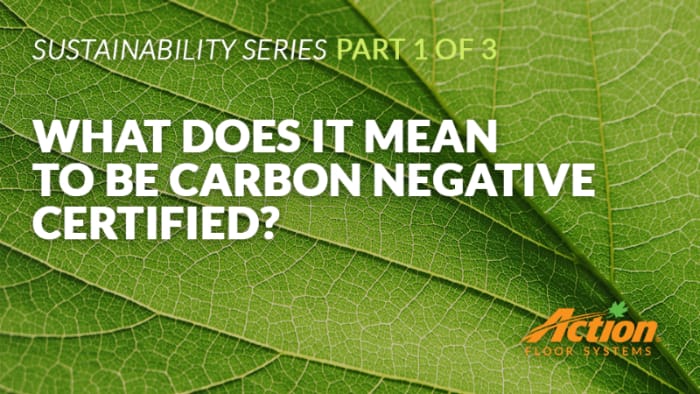 From reducing waste to conserving energy, encouraging sustainable efforts helps us maintain our quality of life. Companies across the globe are going green and incorporating sustainability into their business plans to achieve more by using less.
From reducing waste to conserving energy, encouraging sustainable efforts helps us maintain our quality of life. Companies across the globe are going green and incorporating sustainability into their business plans to achieve more by using less.
According to the World Green Building Trends Report for 2016, the percentage of firms expecting to have more than 60% of their projects certified green is forecasted to grow from 18% to 37% by 2018. In the United States alone, the green building sector is outperforming overall construction growth and will continue to increase.
The rise in green building is a response to market demand and environmental regulations but, above all, it comes from client demand for more sustainable business practices. The study indicates new green buildings can expect to save 14% in operational costs over a five-year period. Additionally, the asset value of a green building can increase by up to 7% over that time, compared to traditional buildings.
Action Floor Systems® is dedicated to being a leader in sustainability, and we maintain our commitment through our operational practices and the products we manufacture. To bring attention to how going green and other environmental efforts change the way the world works, we are featuring a three-part series on the importance of sustainability. Part one takes a closer look at what it means to be carbon negative certified and how our initiative is recognized throughout the company.
Understanding Carbon Negativity
Carbon negativity is the removal of carbon dioxide from Earth’s atmosphere, while carbon reduction is decreasing the amount of carbon dioxide placed into the atmosphere.
Carbon negativity occurs when natural and artificially created minerals are broken down and dissolved resulting in the removal of carbon dioxide from the atmosphere. While natural processes, such as photosynthesis, convert carbon to renewable energy in plants and other organisms, carbon dioxide removal technologies, such as bio-energy with carbon capture, direct air capture, and enhanced weathering, work to reduce carbon emissions in the environment.
Companies across the world, like us, are highlighting the importance of recapturing carbon dioxide from the atmosphere in order to not just neutralize the amount being released, but to actually reduce how much carbon is circulating in the atmosphere, ocean, and biosphere system.
The Impact of Reducing Carbon Emissions
Greenhouse gases are gaseous compounds found in the atmosphere that trap and hold heat in the atmosphere by absorbing infrared radiation. The primary gases of greenhouse gas are water vapor, carbon dioxide, methane, nitrous oxide, and ozone. Carbon dioxide takes the longest of all the gases to leave the atmosphere; up to a century. Emissions of greenhouse gases can be a result of fossil fuel use or certain industrial processes or a facility’s use of energy. The greater the amount of greenhouse gas emissions released directly or indirectly, the higher the price of fuel, electricity, business travel, and waste disposal becomes.
Reducing greenhouse gas emissions isn’t only beneficial for the environment, it also helps individuals and companies reduce expenses in fuel and energy consumption.
There are very few companies recognized as producing a negative emission of carbon. Action Floors is proud to be recognized as the industry’s only carbon negative certified hardwood sports flooring manufacturer. The company earned a carbon negative certification based on a Life Cycle Assessment (LCA) conducted by the University of Wisconsin and Carbon Clear, an international leader in integrated carbon management.
“We were approached by the University of Wisconsin to undergo a Life Cycle Assessment,” Don Brown, Technical Director at Action Floors, said. “After researching different flooring options and learning about our production process, the university decided to conduct an analysis on our mill and forestry practices. As a result of our efforts, we became carbon negative certified; the first in the industry.”
The assessment looked closely at how much relative energy was required for flooring production, as well as the magnitude of global warming impacts, carbon impacts, and other environmental impacts. The results indicated that more carbon is stored in Action Floors’ solid strip hardwood flooring than what is created during the manufacturing process, giving our flooring products a carbon negative footprint.
In addition to the manufacturing of our wood products, Action Floors also practices sustainability and energy efficiency by limiting our use of:
- Transportation
- Water
- Electricity
- Gas
The mill’s drying kilns and heating are powered by steam produced from Action Floors’ boiler that uses a percentage of our wood waste as a fuel source. Using a wood boiler as a power source means zero waste is created, which contributes to Action Floors’ ability to remain carbon negative. The remaining wood waste is recycled and used for other products we manufacture.
Continuing Our Environmental Efforts
Expanding and utilizing renewable energy is important to Action Floors, and we are continuously looking for ways to incorporate environmentally friendly products and practices into the work that we do across the globe. From forestry management to reducing indoor air pollution, we are proud to support global and national initiatives to promote an environmentally sustainable global economy.
With the sectors of new commercial and institutional construction dominating the green project growth chart for the future, our goal is to promote sustainability by working with firms on green-certified projects to further support the global trend.
At Action Floors, the quality of our products reflects our commitment to sustainability. To learn more about our dedication to sustainable practices and our environmentally certified flooring options, click here or contact your local sales representative today.
Tune in next month for part two of our series and learn about what an environmental product declaration (EPD) is and how this certification helps to determine the impact of carbon emissions and energy consumption.



















